Cats, like humans, can experience feelings of depression. While it might be difficult to see your furry friend acting out of sorts, recognizing the signs of feline depression can help you provide the support they need. Whether it’s a sudden change in behavior or a series of subtle shifts, understanding what to look for can make a world of difference. Here’s how you can spot signs of depression in your cat and what you can do to help them feel happier and healthier.
1. Lethargy: When Naps Become Too Long
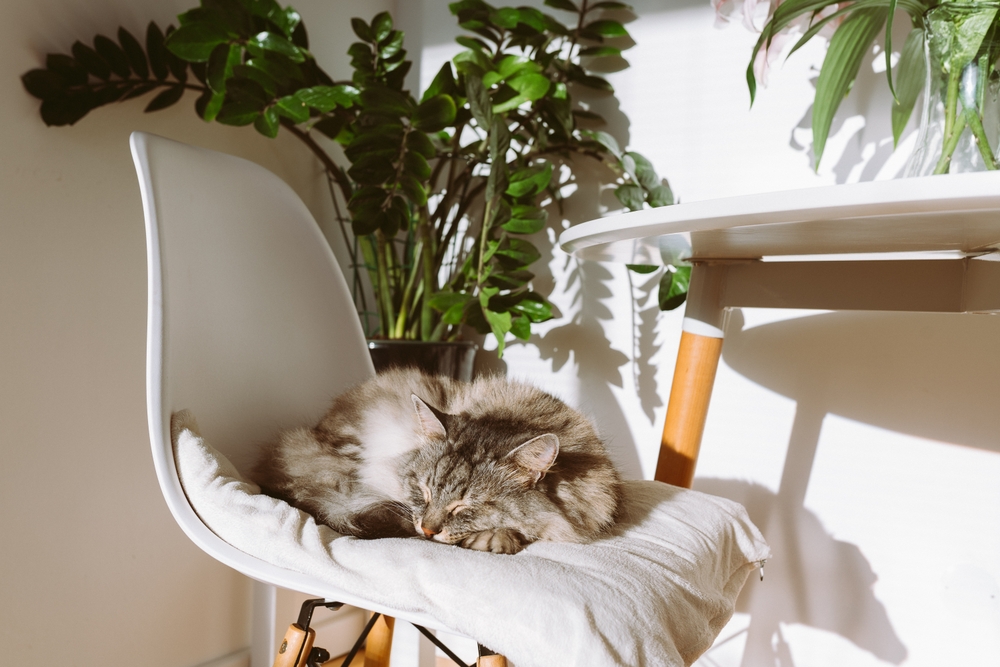
Cats love to nap, but if you notice your kitty spending more time snoozing than usual, it might be a sign of depression. Typically, cats sleep around 12-16 hours a day, but if your feline is consistently clocking in more hours or barely moving from their favorite spot, something might be off. They’re not just being lazy; they might be lacking the motivation to get up and play. This lethargy often comes from a lack of interest in their surroundings and can be triggered by various factors, such as changes in routine or environment.
To help your cat overcome this lethargy, try to engage them with interactive toys or gentle play sessions. Shake up their routine with short periods of activity, encouraging them to explore and move around a bit more. According to Cats.com, setting a regular playtime can significantly improve a cat’s mood and energy levels. Monitor their behavior over time, and if lethargy persists, consult your vet to rule out any underlying health issues.
2. Appetite Changes: Feast or Famine?
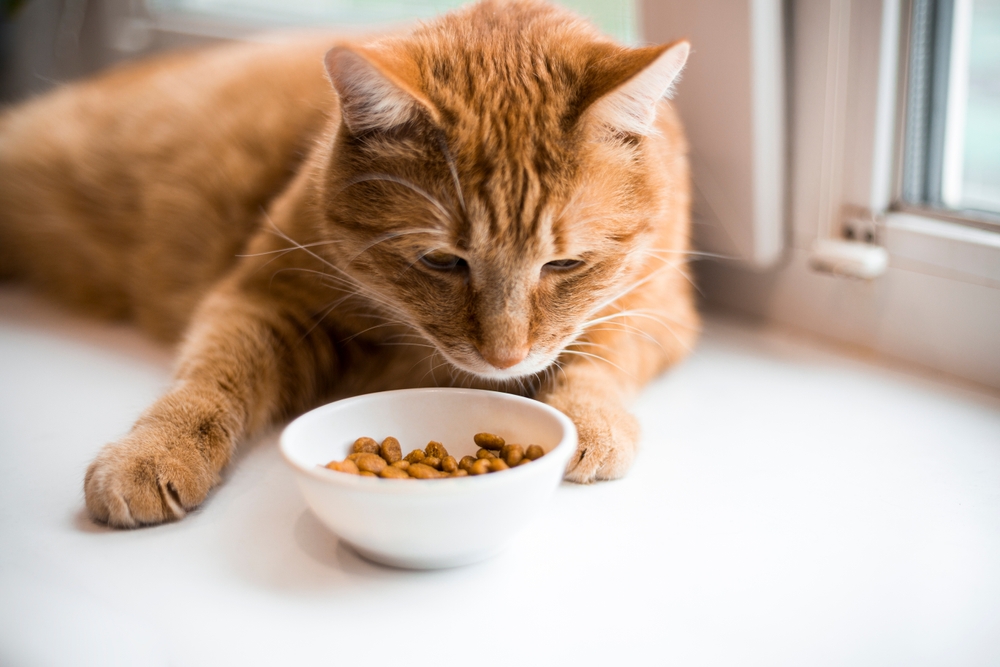
A sudden change in your cat’s eating habits can indicate emotional distress. If your once voracious eater is now picking at their meals or has stopped eating altogether, depression might be to blame. Conversely, some cats might overeat as a way to cope with their feelings, which is equally concerning. Appetite changes can lead to weight loss or gain, both of which have health implications if left unaddressed.
To help your cat, monitor their eating habits and ensure they’re getting the right nutrients. If they’re eating too little, try offering them different types of food to stimulate their appetite. For overeaters, provide smaller, more frequent meals to manage their intake. The Cornell Feline Health Center suggests consulting your vet if your cat’s eating habits don’t stabilize, as they may need medical intervention.
3. Decreased Grooming: A Sign of Neglect
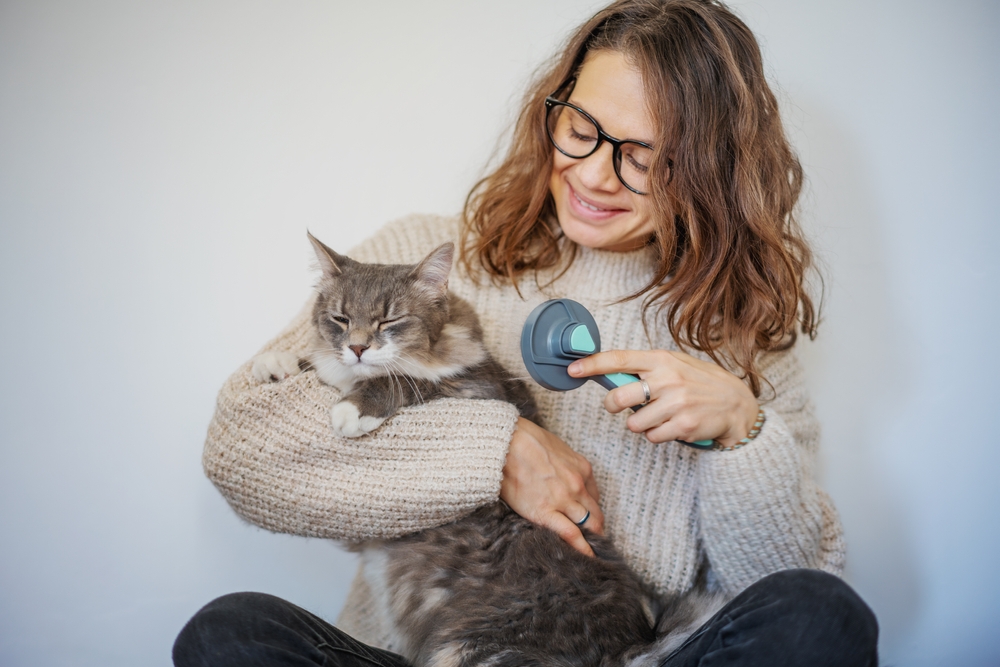
Cats are known for their meticulous grooming habits, so a noticeable drop in grooming can indicate depression. If your cat’s coat looks untidy, matted, or greasy, it could be a sign they’re not taking care of themselves, according to the ASPCA. This neglect often stems from a lack of interest or energy, similar to how humans might neglect personal care when feeling down. Over time, decreased grooming can lead to skin issues or infections, so addressing this behavior is essential.
To encourage grooming, gently brush your cat to help maintain their coat and bond with them. Sometimes, the simple act of being groomed can remind them of their routine and kickstart their interest in self-care. Additionally, keep an eye on their environment; stressors like a new pet or relocation might be affecting them. If grooming habits don’t improve, consider speaking with a vet or an animal behaviorist for further advice.
4. Hiding More Often: Seeking Solitude
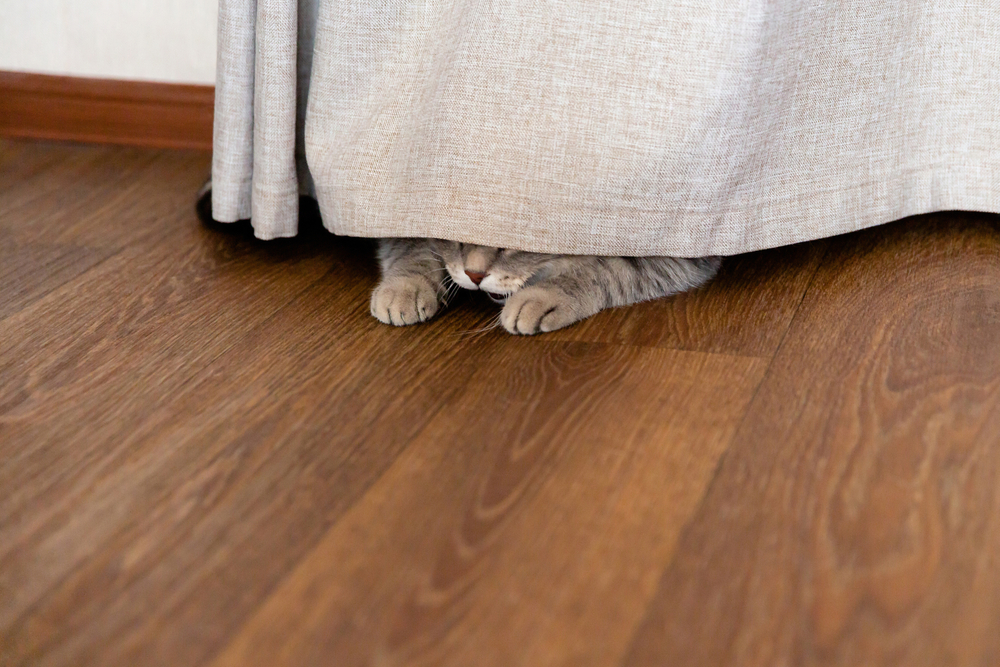
If your feline friend has suddenly become a recluse, preferring the solitude of a closet or under the bed, it could be a sign of depression. Cats often hide when they’re feeling anxious or down, isolating themselves from the hustle and bustle of their surroundings. This behavior can be triggered by stressors such as a new family member, changes in their environment, or even boredom. While some hiding is normal, a significant increase in hiding time can indicate that your cat is struggling emotionally.
To coax your cat out of hiding, create a calm and inviting atmosphere at home. Offer them safe spaces where they can feel secure without being completely isolated. Spend more quality time with them to reassure them of your presence and affection. If possible, introduce new toys or climbing structures to stimulate their interest in exploring again. Keeping their environment consistent and predictable can also help them feel more at ease.
5. Increased Aggression: When Love Turns to Bites
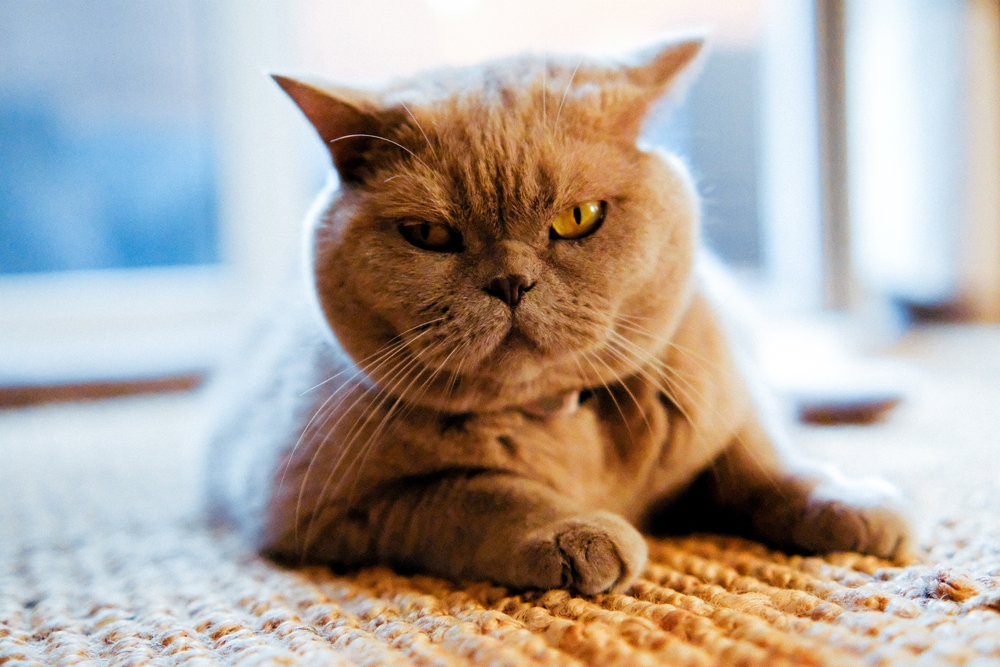
A usually friendly cat suddenly showing signs of aggression can be alarming and is often a cry for help. Aggression might manifest as biting, hissing, or swatting at people or other pets without provocation. Many times, this behavior is rooted in fear or discomfort, which can stem from depression or anxiety. Changes in their environment, such as new pets or family members, can trigger these feelings and make your cat feel threatened or uncomfortable.
To address aggression, it’s important to approach your cat calmly and avoid punitive measures, which can exacerbate the issue. Positive reinforcement and maintaining a consistent routine can help them feel more secure. If aggressive outbursts continue, consulting with a veterinarian or animal behaviorist can provide further insights into the underlying causes. Providing your cat with personal space and ensuring they have safe areas to retreat to when overwhelmed can also reduce aggressive tendencies.
6. Vocalization: Cat Chatting More Than Usual
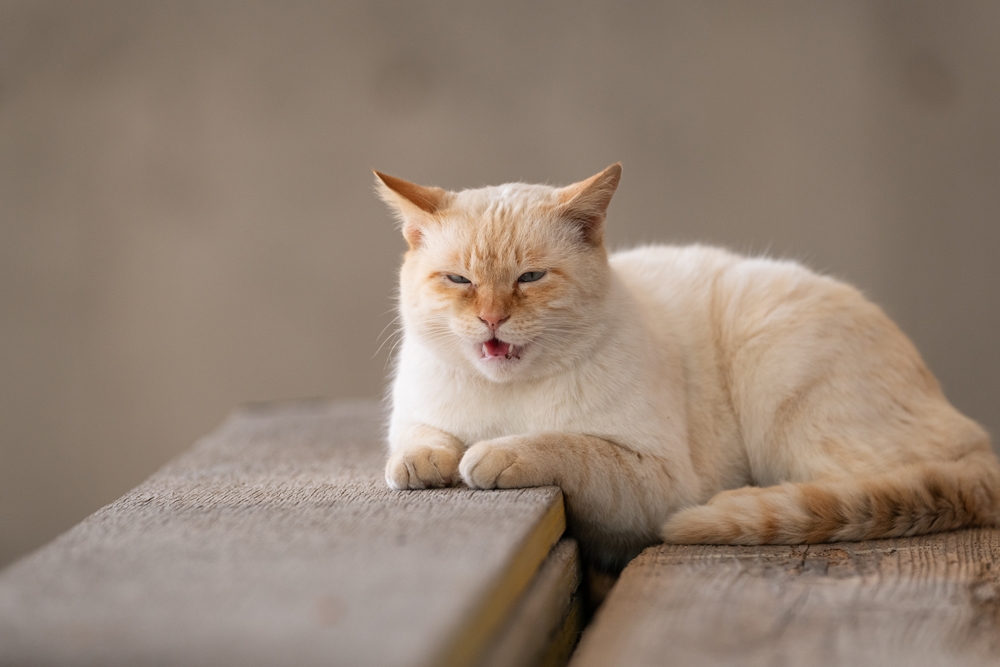
An increase in vocalization can be a sign that your cat is experiencing emotional distress. Cats may start meowing more often, and their cries may sound more urgent or distressed than usual. This uptick in vocal behavior could be their way of seeking attention, expressing discomfort, or just trying to communicate their feelings of loneliness. It’s worth noting that some breeds are naturally more vocal, so it’s essential to distinguish between normal and excessive vocalization.
To help your chatty feline, respond to their calls by spending quality time with them. Talk back to them in a soothing voice, and engage them in interactive play to divert their attention from whatever might be bothering them. Ensuring they have plenty of stimulation throughout the day can also help reduce excessive meowing. If the vocalization seems related to physical discomfort or doesn’t subside, a visit to the vet is advisable to rule out any medical issues.
7. Litter Box Issues: Messy Signals
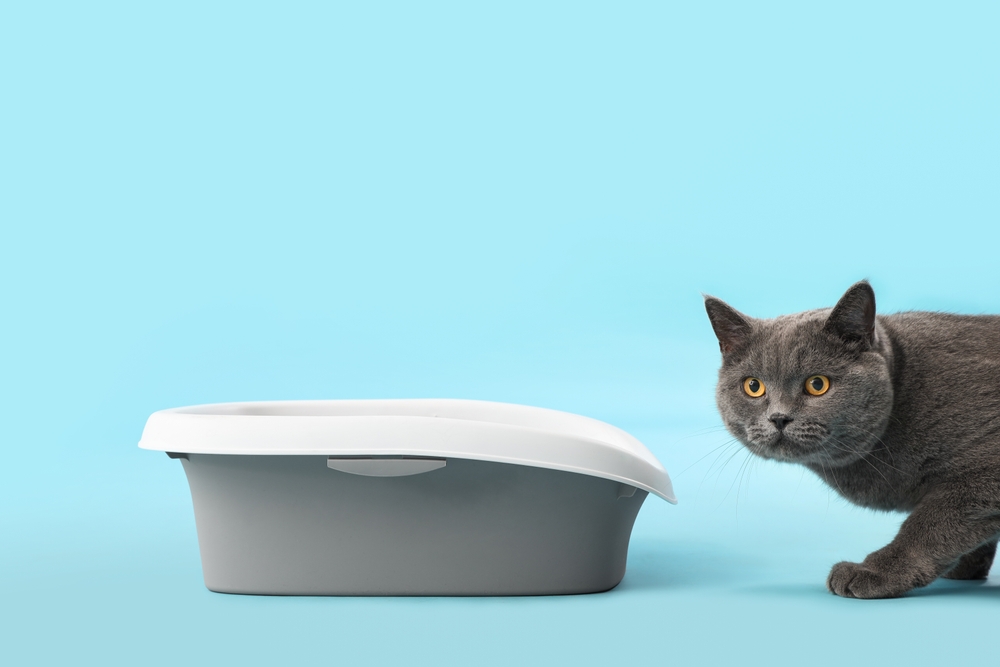
Cats are generally very particular about their bathroom habits, so litter box issues can be a red flag for stress or depression. If your feline friend starts avoiding the litter box, urinating or defecating outside of it, they might be trying to tell you something is wrong. This behavior can stem from changes in their routine, a dirty litter box, or even a health issue that requires medical attention. Ignoring these signals can lead to more stress for both you and your cat, so it’s crucial to address the problem promptly.
Start by ensuring their litter box is clean and in a quiet, accessible location. Sometimes, even the type of litter or box can affect their willingness to use it. If the problem persists, consider what might have changed in your home that could be affecting their behavior. Consulting with a vet can help determine if there’s an underlying health issue or if behavioral modification techniques would be beneficial.
8. Lack of Interest in Play: Toys Gathering Dust
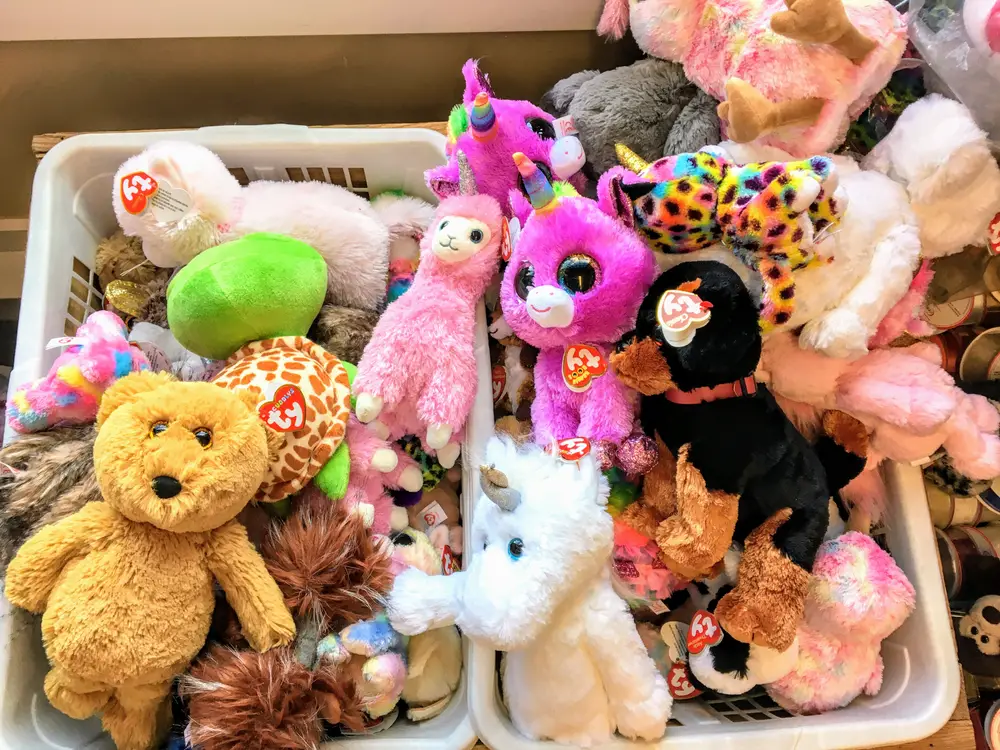
If your usually playful kitty shows no interest in their favorite toys, it might be a sign of depression. Cats thrive on stimulation, and play is a crucial part of their mental and physical health. When a cat loses interest in activities that once excited them, it’s often a signal that they’re feeling down. This lack of interest can be due to boredom, environmental changes, or even a reaction to stress.
To reignite your cat’s playful spirit, try introducing new toys or rotating their current ones to maintain novelty. Spending dedicated time each day to engage them in interactive play can also help bring back their enthusiasm. Consider incorporating puzzle feeders or treat-dispensing toys to challenge their mind and keep them entertained. If your cat remains unengaged, a consultation with a vet might be necessary to explore other reasons for their disinterest.
9. Changes in Sleeping Patterns: Cat Nap Crisis
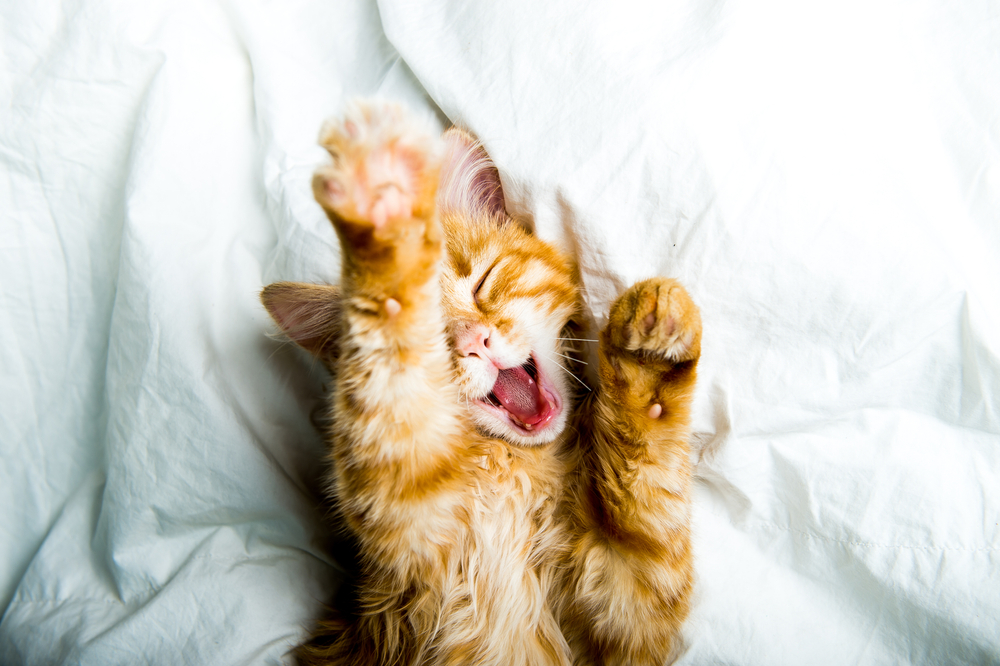
While cats are known for their love of sleep, noticeable changes in their sleeping patterns can indicate depression. If your cat starts sleeping much more or less than usual, it can be a sign that something is amiss. Excessive sleep could be a way for them to escape from distressing feelings, while insomnia might be due to anxiety or other discomforts. Understanding your cat’s normal sleep routine can help you identify when there’s a problem.
To help manage these changes, try to create a consistent routine that includes playtime, feeding, and quiet rest periods. A comfortable and safe sleeping environment can encourage healthy sleep habits. Monitor their behavior for any additional signs of stress or discomfort that might be affecting their sleep. If the changes in their sleeping patterns persist or worsen, consult your veterinarian to rule out any underlying health concerns.
10. Over-Grooming: Too Much of a Good Thing
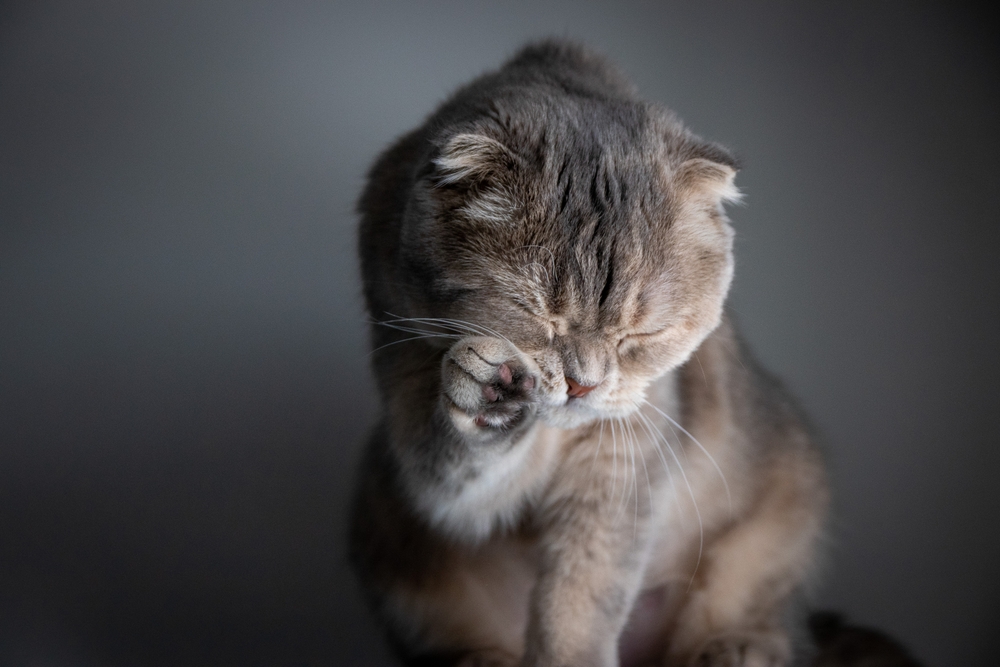
While some cats neglect grooming when depressed, others might do the opposite and groom excessively. Over-grooming can lead to bald patches, skin irritation, and even sores. This behavior is often a coping mechanism for stress or anxiety, providing your cat with temporary comfort. However, it can also indicate medical issues such as allergies or parasites, so it’s essential to monitor their skin for signs of trouble.
To help curb over-grooming, provide your cat with distractions and enrichment to relieve stress. Environmental enrichment, such as interactive toys or climbing trees, can help reduce anxiety. Ensuring your feline has a safe, comfortable space to retreat to can also alleviate stressors in their environment. If the behavior continues, consult your vet to rule out medical conditions and discuss possible behavioral interventions.
11. Excessive Clinginess: Velcro Cat Alert
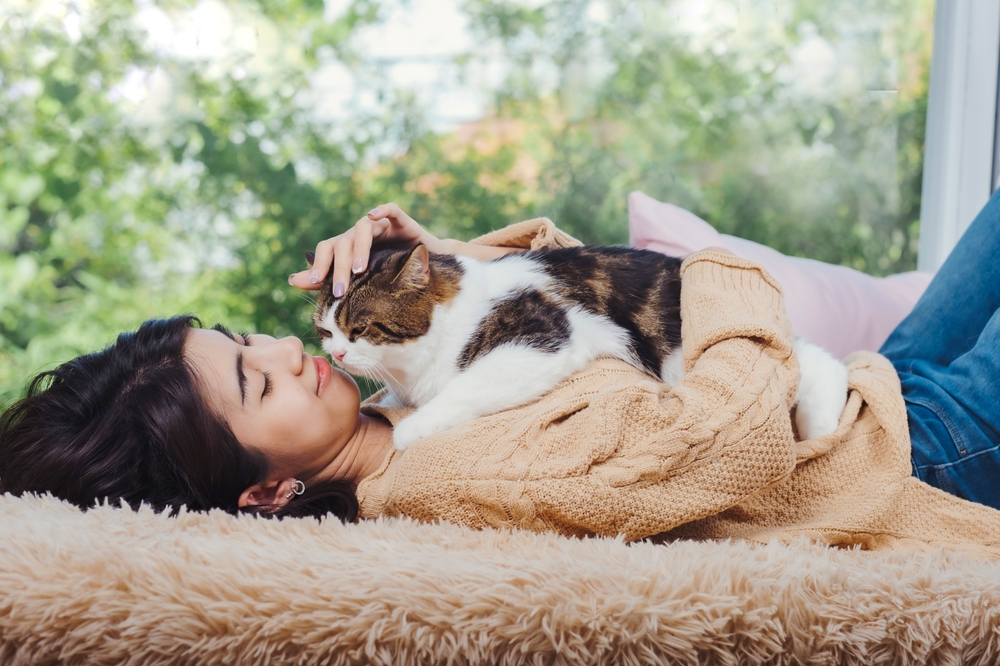
On the flip side of hiding, some cats become unusually clingy when they’re feeling down. If your independent kitty suddenly follows you everywhere or demands more attention than usual, they might be seeking comfort in your presence. This clinginess can be a cry for help, indicating they’re feeling insecure or anxious about something in their environment. It’s essential to respond with patience and love, as your attention can be a significant source of comfort for them.
To balance this clinginess, ensure your cat has plenty of enrichment and stimulation to occupy their time. Gradually encourage them to spend time independently, offering praise and rewards when they do. Regular, positive interactions with you can help them regain confidence and reduce anxiety. If their clinginess becomes overwhelming or persistent, consider consulting with a vet or behaviorist for further guidance.
12. Increased Scratching: A Destructive Cry for Help
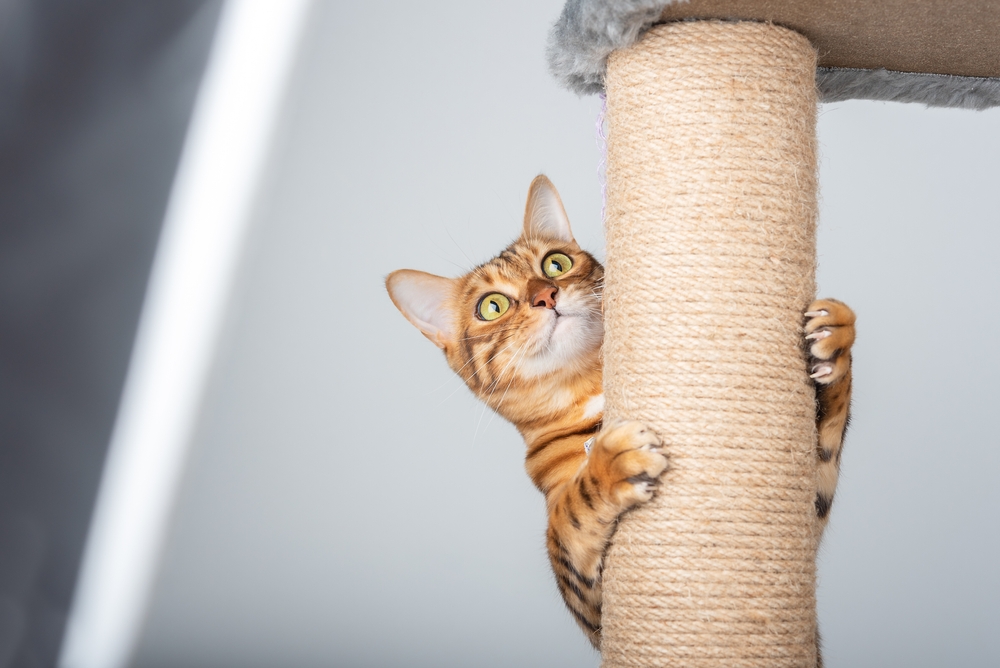
Cats naturally scratch to mark their territory and maintain claw health, but excessive scratching can signal distress. If your cat starts damaging furniture or walls more than usual, it might be a sign they’re feeling anxious or unhappy. This behavior could be a way to relieve stress or even a response to changes in their environment. If left unchecked, it can lead to damaged property and a tense relationship with your feline friend.
To manage excessive scratching, provide your cat with a variety of scratching posts and pads throughout your home. Ensure they’re sturdy and placed in areas your cat frequents. Encourage their use by sprinkling catnip on the posts or rewarding your cat when they use them. If the behavior continues, consider what environmental factors might be contributing to their stress and work to address those issues.
13. Lack of Curiosity: Uninterested Observer
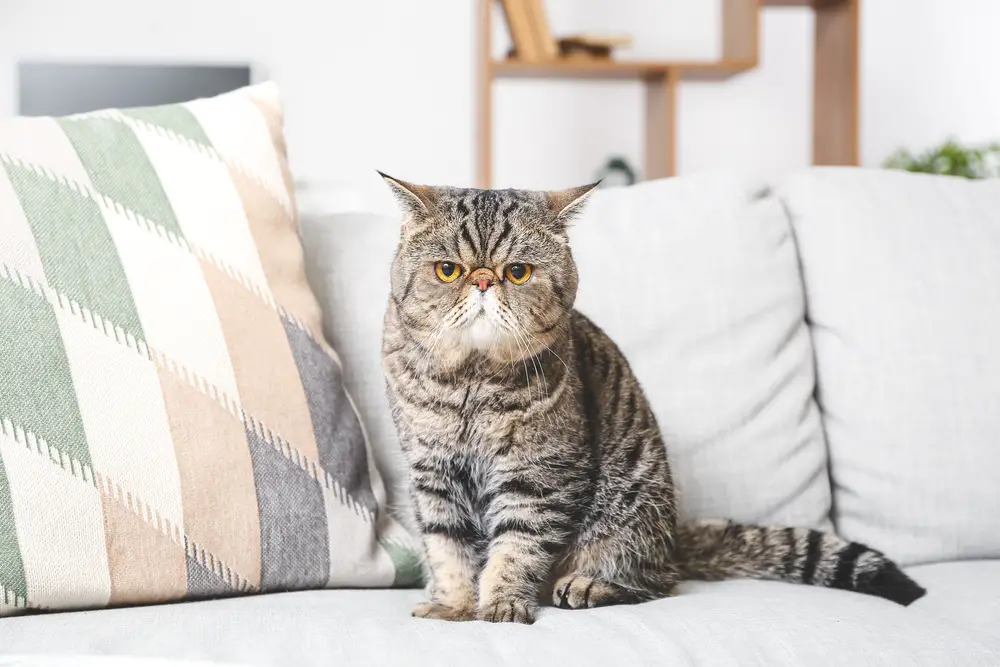
Cats are naturally curious animals, so a sudden disinterest in their surroundings can indicate depression. If your cat seems uninterested in investigating new objects, people, or even outdoor activity viewed through a window, it might be a sign they’re feeling low. This lack of curiosity can stem from boredom, stress, or even a medical issue, and can lead to further withdrawal if not addressed.
To stimulate your cat’s curiosity, try introducing new elements into their environment. This could include rotating toys, offering puzzle feeders, or even setting up a bird feeder outside a window for them to watch. Engaging them in interactive play can also help rekindle their interest in the world around them. If these efforts don’t spark curiosity, consult your vet to explore any underlying issues that might be affecting your cat’s behavior.
14. Withdrawal from Social Interaction: The Aloof Feline
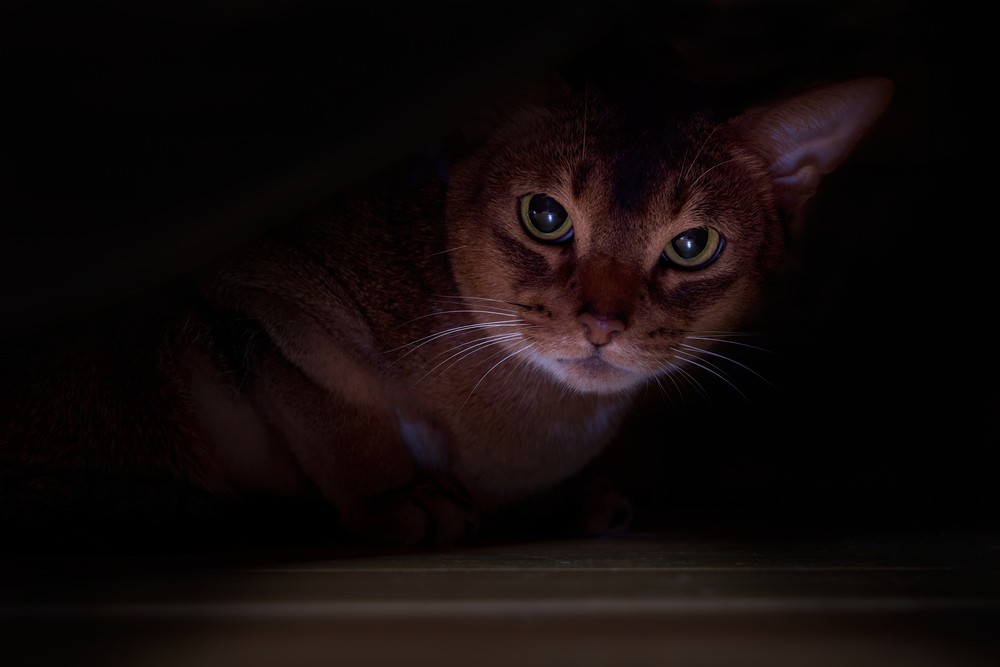
If your cat is suddenly avoiding interaction with family members or other pets, it might be a sign of depression. Withdrawal can manifest as spending more time alone or avoiding being petted or held. This behavior can be due to feeling overwhelmed, stressed, or simply down. It’s important to respect their space while also finding gentle ways to reintegrate them into social activities.
To encourage social engagement, try spending quiet time near them, allowing them to approach you at their own pace. Offer gentle affection and use treats or toys to coax them into interacting. Maintaining a calm and peaceful household can also reduce stressors that might be contributing to their withdrawal. If your efforts don’t result in improvement, seeking advice from a vet or a pet behaviorist can provide additional strategies to help your cat open up again.
